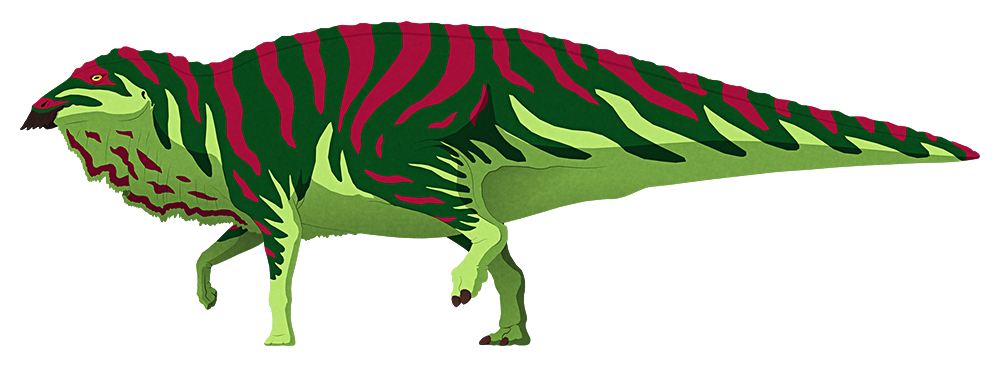During the Late Cretaceous one of the larger islands in the European archipelago was located around the northeast coast of the modern Adriatic Sea and the Dinaric Alps.
And towards the very end of the Cretaceous, about 72-66 million years ago, this Adriatic-Dinaric island was home to the hadrosauroid dinosaur Tethyshadros.
Surprisingly it wasn’t very closely related to earlier European hadrosauroids, and its ancestors seem to have actually originated in Asia, island-hopping their way westward over to the Adriatic-Dinaric.
At around 4m long (~13′) it was much smaller than most of its close relatives and was another example of insular dwarfism. But it had some odd body proportions: its head was relatively large, its neck and tail were fairly short, its limbs were long and gracile, and it had a reduced number of fingers in its hands. It appears to have be specialized for running, sort of like a dinosaur mimicking a horse.
It also had a weird highly serrated edge to its beak, which in life would have been even more pronounced and spiky-looking. The purpose of this is unknown for certain, but it may have been an adaptation for a specific food source – and since some hadrosaurs seem to have occasionally snacked on shellfish for extra protein, it’s possible Tethyshadros was also doing something more omnivorous along the shores of its island home.


